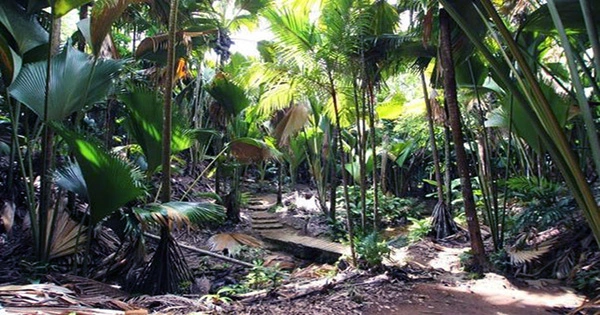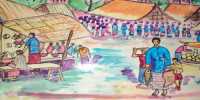A group of individuals who were residing in the jungles of Mindanao Island in the Philippines during the 1970s and 1980s attracted the interest of anthropologists as well as the media. Their discovery occurred the first time, and alleged fraud occurred the second.
In 1971, the Tasaday people were initially “found.” According to reports, 26 people were using Stone Age tools, lived in caves, wearing minimal clothing, and speaking their own unique language. The clan lived as hunter-gatherers and had no touch with or knowledge of the outside world; they had no idea how to produce on their own.
According to a study on the group published in 1972, “they have since 1966 learnt to trap numerous species of animals, even though their economy is primarily and historically focused on food-collecting.” “According to preliminary linguistic data, the Tasaday have been separated from their closest non-forest neighbors for at least 600 years. This judgment is provisional, just like the rest of the report.”
A lot was written about the tribe because it was such a significant discovery. On the group, National Geographic created a documentary. The discovery team was directed by a wealthy politician the following year, Manuel Elizalde Jr., who also established camps from where the Tasaday could be watched. Politicians, famous people, and media professionals were permitted to visit the camp to observe the Tasaday living their “Stone Age” lifestyles. The opposite was true for biologists, anthropologists, and social scientists.
Only a select group of anthropologists, chosen by Elizalde Jr., were permitted to approach these recently found people before the camp was shut down later that year. The Tasadays’ residence was off bounds until after Filipino President Ferdinand Marcos was overthrown in 1986 because he had prohibited visitors by year’s end.
Once visitors were permitted to come back, rumors of a fake started to spread.
The Tasaday was a fake, according to a Swiss journalist who claimed to have seen them in 1986: “a mixed community of Manobos and Tbolis persuaded by promises of land and money to act the part of cave-dwelling, stonetool-using primitives whenever Elizalde asked them to do so.” At an anthropological symposium, there were soon reports that some Tasaday had college degrees and were blood relations of people living beyond the Tasaday area, albeit this is also a questionable assertion with scant supporting data.
Despite this, there were many people who suspected dishonesty, particularly Elizalde, who benefited financially from the finding thanks to funding he had obtained for the organization.
“Given that Elizalde found them, that Elizalde led the journalists to where they were, and that Ferdinand Marcos, after declaring martial law in 1972, promulgated a decree (Presidential Decree No. 1032) that made the Tasaday territory a reservation on which no one could enter without prior permission – a permission that, to my knowledge, was never granted to any foreign anthropologist – it becomes all too obvious that the Philippine government encouraged.
With a likely explanation that they were a community that had been almost completely isolated from the rest of the world, but not for as long as Elizalde made out, both stories—that they had been secluded for hundreds of years or that they were staging a hoax—had their drawbacks. The language they spoke provided evidence for this, bearing resemblances to regional tongues from 150 years earlier and pointing to a possible split’s approximate time frame.
According to the linguistic evidence currently available, I draw the conclusion that the Tasaday may have been living in close proximity to isolation from other groups, as they have consistently claimed, but that the isolation may have lasted for only a few generations, possibly no more than 150 years, wrote linguist Lawrence Reid of the Tasaday in 1992.
Otherwise, the differences between the Tasaday speech variation and that of its closest relatives would be more pronounced.
President Corazon Aquino declared the Tasaday people to be a legitimate minority group in 1988. They are a subset of the Lumad tribe of indigenous people in the southern Philippines. However, many academics are suspicious and believe that there is still no proof that the whole affair was a fraud.














